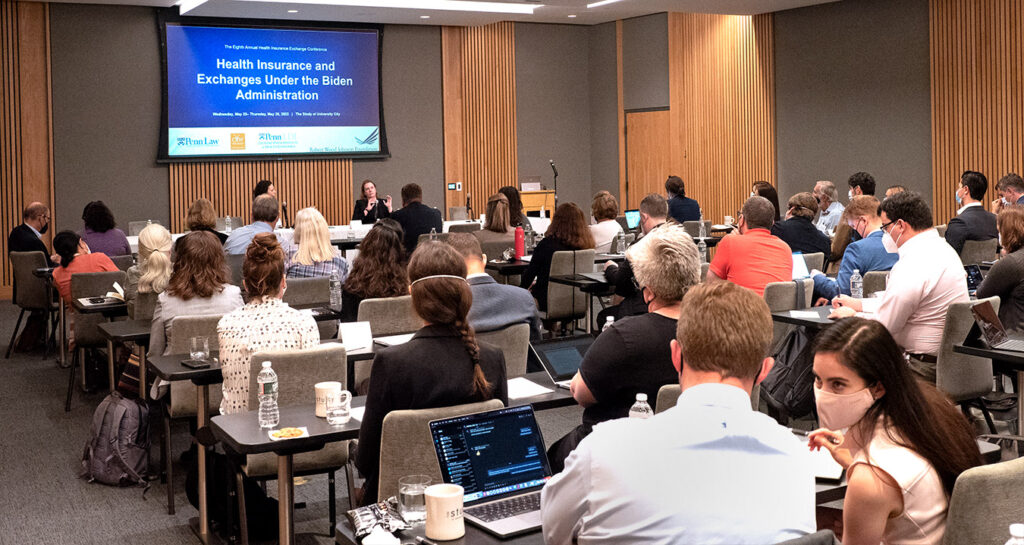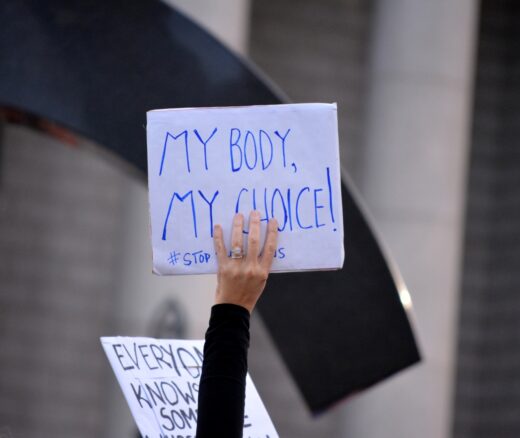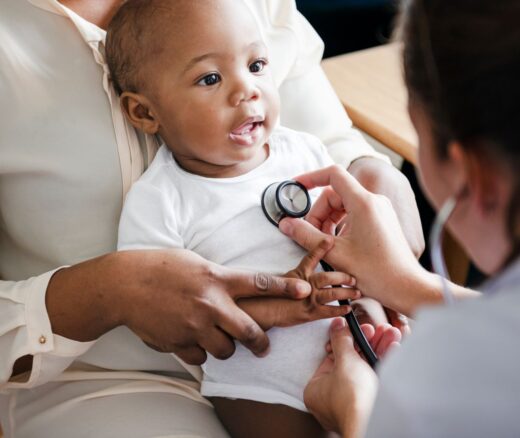Less Postacute Care for Medicare Advantage Beneficiaries Does Not Mean Worse Health
Research Brief: Shorter Stays in Skilled Nursing Facilities and Less Home Health Didn’t Lead to Worse Outcomes, Pointing to Opportunities for Traditional Medicare
News

After a two-year hiatus from in-person gatherings, the University of Pennsylvania Health Insurance Exchange (HIX) Conference convened a two-day meeting on May 25 focused on the theme of “Health Insurance and Exchanges Under the Biden Administration.”
Hosted by Penn’s Carey Law School and co-sponsored by Penn’s Leonard Davis Institute of Health Economics (LDI) and the Princeton University Center for Health & Wellbeing, the Eighth annual HIX Conference was also supported by the Robert Wood Johnson Foundation. It brought together 47 top executives from state insurance departments and health exchanges across the country, along with health services researchers from nine universities, and other top experts from think tanks and non-profit organizations.
Conducted under “Chatham House Rules,” the attendees at the invitation-only event are allowed to openly discuss the content of the proceedings but agree not to attribute any specific comment to any specific participant. The goal is to facilitate candid discussions by those deeply involved in the management and evaluation of the state and federal programs that have been the subject of intense political debate over the last 10 years.
The participants’ overall assessment of the current state of the health insurance exchanges (also called insurance marketplaces) established by the Affordable Care Act was surprisingly positive in a COVID-19 era that has otherwise witnessed such extensive national disruptions and downturns.
In 2022, the exchanges have experienced their highest levels of enrollment since the system was launched in 2014. More than 14.5 million people are now covered by private health plans purchased through the government subsidized exchanges. That’s 21% higher than the enrollment numbers of 2021.
One reason for this was the Biden Administration’s American Rescue Plan Act (ARPA) promulgated last spring that layered significantly increased subsidy funding on top of the existing subsidy structures reducing the cost of coverage — in some cases quite dramatically. In addition, an extended enrollment period and greatly beefed-up campaigns of advertising and enrollment assistance support helped bring in more customers this year, particularly from underserved communities.
But the ARPA’s boosted exchange subsidies are scheduled to expire in December, after which the prices for exchange insurance policies will rise, putting coverage out of affordability range for many of those who now have it.
In a closely related development in late 2020, a Public Health Emergency Declaration issued by the Department of Health and Human Services in concert with the Families First Coronavirus Response Act barred state Medicaid programs from terminating benefits for recipients who no longer met the Medicaid enrollment eligibility rules. The goal was to stabilize and broaden health care coverage during the extraordinary period of the pandemic. This public health emergency declaration was due to expire in April but was, at the last minute, extended for another 90 days on April 16.
This was a major topic of the HIX Conference because when the emergency declaration does expire, large numbers of current Medicaid recipients will be dropped from the state rolls and will have to scramble for health insurance coverage. Some will be able to get exchange coverage.
Both federal and state exchange officers are working to find ways to have the increased ARPA exchange subsidies extended beyond the December cutoff date and preparing for a large surge of newly uninsured people dropped from Medicaid coverage when the emergency declaration ends. Both these changes would heavily impact underserved communities.
The plans currently being discussed envision the creation of a system of more direct and seamless Medicaid-to-marketplace exchange connections and marketplace exchange-to-Medicare connections. People dropped from Medicaid would be quickly and efficiently processed into low or zero-cost coverage on the marketplace exchanges. Similarly, those who reach Medicare eligibility age could be systematically moved from for-fee private insurer policies of the marketplace exchanges to Medicare coverage.
Regulators are working to make sure that the end of the public health emergency is timed well with the next health insurance open enrollment on the marketplaces. That would make it more convenient for Medicaid recipients who’ve lost their coverage to immediately restore it by enrolling in the exchanges.
Beyond these two critical issues, the HIX Conference participants reported efforts underway toward:
Below are photos of some of the conference participants:

Research Brief: Shorter Stays in Skilled Nursing Facilities and Less Home Health Didn’t Lead to Worse Outcomes, Pointing to Opportunities for Traditional Medicare

How Threatened Reproductive Rights Pushed More Pennsylvanians Toward Sterilization

Abortion Restrictions Can Backfire, Pushing Families to End Pregnancies

They Reduce Coverage, Not Costs, History Shows. Smarter Incentives Would Encourage the Private Sector
Research Brief: Less Than 1% of Clinical Practices Provide 80% of Outpatient Services for Dually Eligible Individuals

New Findings Highlight the Value of 12-Month Eligibility in Reducing Care Gaps and Paperwork Burdens